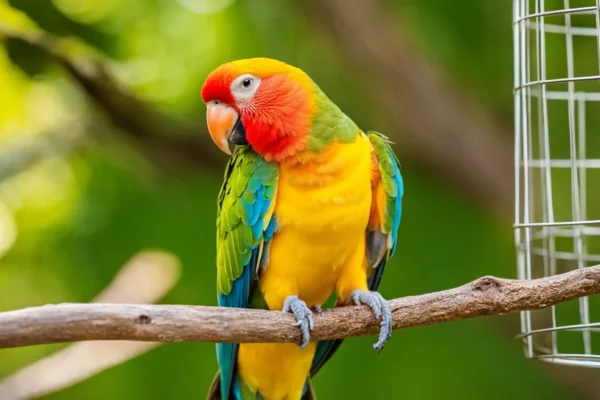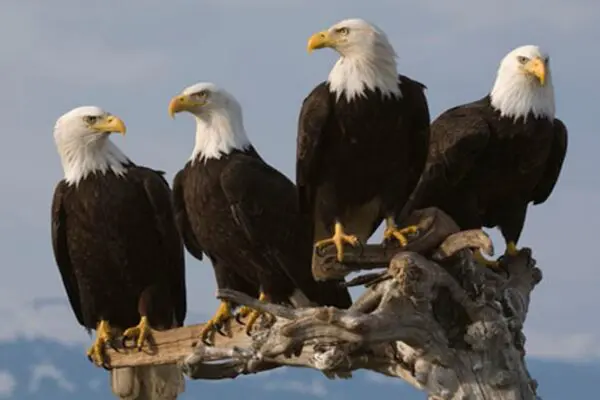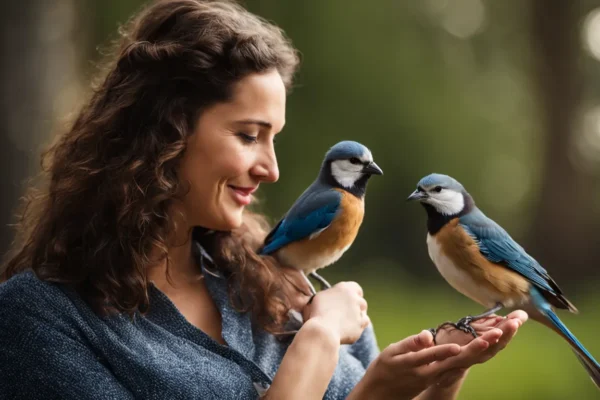Maybe you’ll see a flash of orange zipping amid the grass or leaping from branch to branch as you take a walk through a nearby meadow or woods. One of the species on our list today, a stunning bird with a standout orange breast, may have been sighted by you.
If you reside in North, South, or Central America, you’re in luck since most of the birds on our list may be spotted nearby!
Animals with Orange Coloration
Animals in the natural world with orange coloring include fierce Bengal tigers and delicate monarch butterflies. Bright orange may often signal significant toxicity in tiny animals, alerting possible predators to steer clear of them. The term “aposematism” refers to the employment of vivid warning colors in animals. Bright, contrasting colors are used by slow-moving species, like Gila Monsters, to alert predators to their unpleasant, poisonous bite. This helps the creatures avoid being eaten by predators.
Some non-poisonous, toxic, or venomous species deceive predators into believing they are by using vivid colors! We call this deft evolutionary maneuver Batesian mimicry.
Tigers and other orange-colored animals utilize their coloring and patterns to blend in with their surroundings. Tigers are almost hard to notice for their prey, such as deer and boar, who cannot readily distinguish between orange and green. To the human sight, tigers stand out against the green trees around them. An ingenious method of capturing gullible victims!
Birds with Orange Coloration
It is known that very few bird species are toxic or use Batesian mimicry. Among these are the Hooded Patouni and the Cinereous Mourner and Brazilian Laniisoma, two species found in the Amazon. So why are the feathers of some birds brilliant orange?
Birds’ vivid orange, red, and yellow coloring is often caused by the plant pigments in their diet. Carotenoids are pigments found in some foods, such as berries and seeds. These birds communicate, generally to other members of their own species, by the vivid colors of their feathers. Because the color indicates that the bird has a nutritious diet, brighter, bolder colors might suggest that a person is in excellent health and fitness.
Two distinct families within the orange-chested bird group are the Tanager and Oriole families. Let’s examine the most flamboyant instances of these families.
Orange-chested tanagers
Thraupidae is the name of a big family of songbirds that includes the tanagers that may be found in the United States. The majority of the family’s species live in household gardens, woodlands, and undergrowth. They are renowned for their amazing, vibrant colors, which vary from tangerine orange to fiery red. Certain species also include blue, green, and yellow tones.
Because carotenoids are transferred from fruit, which is the primary food source for most tanagers, these birds have exotic plumage. We’ll now examine a handful of the more flamboyant instances in more detail.
1. The Red-Haired Tanager

The striking red-orange breast of the Scarlet Tanager, with its black wing and tail feathers, is only seen on mating males of the species. Males and females that do not breed are yellow-green in color, with black-gray wings.
After removing one Tanager egg from a nest, a cunning bird species known as the Brown-headed Cowbird may sometimes place another egg in the nests of Scarlet Tanagers. Raising the chick as if it were their own, the parents of the Scarlet Tanager are unable to recognize the difference.
2. Flame-hued Tanager

From Mexico to Panama, Central America is home to this amazing, flaming tanager. Flame-colored Tanagers are shy, silent, and sometimes difficult to see. Males tend to have more orange tones on their heads and chests, whereas females tend to have more yellow tones.
Puerto Rico’s national bird is this species!
3. Hepatic Tanager

In this species, the females and immature males are mostly bright yellow and green in color, whereas the adult males have a dark, orange-red color palette. Southern North America, Central America, and a large portion of South America are home to the Hepatic Tanager.
Because of the orange-red coloring of the males, this species is called after the liver, which is what the word “hepatic” alludes to. Intriguingly, there hasn’t been much research done on this species, so if you’d want to specialize on Hepatic Tanagers, the ornithological community would welcome you!
Orange-chested Orioles:
This family of birds has more yellow-red plumage than tanagers, but its striking colors and contrasting tones are still quite attractive! Today’s focus is on Oriole species, all of which belong to the genus Icterus under the family Icteridae. The name “oriole,” which has many Latin word roots, means “golden,” which is a fitting descriptor for the species on our list.
4. Baltimore Orioles

The most prevalent species of Oriole in eastern North America, it is considered a sign of the arrival of spring. While female plumage may range from a paler yellow to tangerine orange, adult males have the most orange chest plumage.
Nectar and dark-colored fruits, such as purple grapes and cherries, are favorites of the Baltimore Oriole. They sometimes display an odd behavior known as “gaping,” in which they puncture soft fruits and berries and then sip the liquid that emerges from the hole they make.
5. Altamira Oriole

The Altamira Oriole, a tropical species mostly found in Central America, attracts attention with its fiery yellow-orange underside. You could be fortunate enough to get Altamira Orioles to your bird feeders if you live in this area; they like eating fresh fruit and will drink nectar from hummingbird feeders.
This species weaves long strands of fibrous materials, such as grass, Spanish moss, and palm fronds, into a massive, pouch-like nest. These nests are sometimes even hung from telephone lines!
6. Orchard Oriole

The Orchard Oriole is the least showy Oriole on our list, but it’s still a great candidate because of its stunning rusty-orange breast. This species’ males have an orange chest, while the females are more yellow-and green-colored.
Some tropical plant species rely on the Orchard Oriole as a pollinator because, when it visits a flow in quest of nectar, some pollen sticks to its feathers and travels freely to the next bloom it visits.
Additional Orange-chested Birds:
7. American Robin

The American Robin is perhaps the most recognizable orange-breasted bird that comes to mind if you reside in North America. In addition to more untamed settings like the alpine woods of Alaska, they are often seen in gardens and metropolitan areas.
While some populations travel north to breed and south to overwinter, others live in central North America year-round. This species feeds only on the ground, removing worms and other insects from the earth. They have been known to become drunk on honeysuckle berries alone! They often eat fruits, especially in the winter!
8. European Robin:

The European Robin is perhaps the most recognizable orange-breasted bird to those who reside in Europe. The European Robin belongs to the family Muscicipidae (Old World Flycatchers), but the American Robin belongs to the family Turdidae (Passeriforms, or perching birds). Therefore, this species of robin is not related to the American robin.
This species is also known as the gardener’s friend, and because of its bright orange breast and wintertime abundance, it is often regarded as a symbol of Christmas in Europe. When a gardener is working, robins can be extremely sociable and may frequently linger nearby in the hopes of swooping in to steal a nice worm or bug that has been exposed by gardening duties.
9. Varied Thrush

The Varied Thrush is a stunning bird found in western North America with magnificent patterns and a metallic singing. This species may be hostile, protecting its feeding grounds from other Varied Thrushes as well as other species. Its preferred habitat is old-growth, coniferous woods, where it spends the winter months mostly on berries.
As altitudinal migrants, varied thrushes spend the winter in milder, lower-altitude regions after breeding in mid- to high-altitude regions.
10. Allen’s Hummingbird

Allen’s Hummingbird is found in a few places on North America’s west coast. The breast of both sexes is orange-colored, but only the males have a beautiful, iridescent orange patch of plumage near the neck region. The males employ this orange flash as part of their mating ritual, showing off their throats in swooping, arcing flights as their tails make a high-pitched screeching sound.
The amazing method used by Allen’s hummingbirds, like with other hummingbirds, is that they regulate their body temperature using their feet. They tuck their feet under their belly plumage to keep warm during cold times. They allow their feet to drop during flight to help cool down as the temperature rises.
11. black-headed grosbeak

In this species, the females and juvenile males have paler coloring, while the adult males have more pronounced black-and-white wings and a peach-orange breast. They can readily break apart the husks of sunflower seeds because to their thick bills.
Beware, monarch butterflies! One of the few predators that can withstand the poisons present in the bodies of these exquisite butterflies is the black-headed grosbeak. It has been observed that grosbeaks wait eight days between eating the butterflies, giving their bodies time to eliminate the poisons.
12. The Eastern Bluebird

This species’ breasts are lovely and vary in color from light brown to peachy-orange on both sexes. But only the males have a stunning electric blue coloring that extends from the tip of the tail feathers to the beak.
This species is widespread across Central and North America, where it is often seen lounging outside along fences or wires. An adventurous bunch, they have sometimes been seen catching bigger prey including snakes, tree frogs, and lizards!
13. Orange-breasted Falcon

The ICUN has classified the Orange-breasted Falcon, a rare bird of prey, as Near-Threatened because of a sharp drop in population. It ranges in location from southern Mexico to the northern point of Argentina, preferring environments of mature forests.
This species has an amazing fiery orange breast and underbelly that are broken up by a strip of speckled black that resembles a waistcoat. Orange-breasted Falcons build their nests at comparatively high heights on rocky cliffsides. Their reproductive rate is lower than that of other falcons, which may contribute to their near-threatened status even though they care for the chicks for a longer period of time.
14. Orange-breasted Sunbird

The Orange-breasted Sunbird is restricted to the southernmost point of South Africa, making it one of the few birds on our list that are not present in the Americas. This bird will stick in your memory because of its amazing blended plumage, which includes a bright yellow-orange breast and an iridescent petrol blue head.
This species, like hummingbirds, can hover and use its unique tubular tongue and small, curved mouth to feast on nectar from flowers.
15. The Mountain Finch of Cochabamba
The Cochabamba Mountain Finch, a gorgeous bird with a striking orange face, breast, and underbelly, is an endangered species that is limited to a single region in Bolivia.
It depends on a certain kind of woodland that has a rare tree known as Polylepis subtusalbida. The charming tiny Cochabamba Mountain Finch is endangered by habitat loss, but there are initiatives in place to save it (one of which you can read about here:
https://armoniabolivia.org/programs/cochabamba-mountain-finch/)







